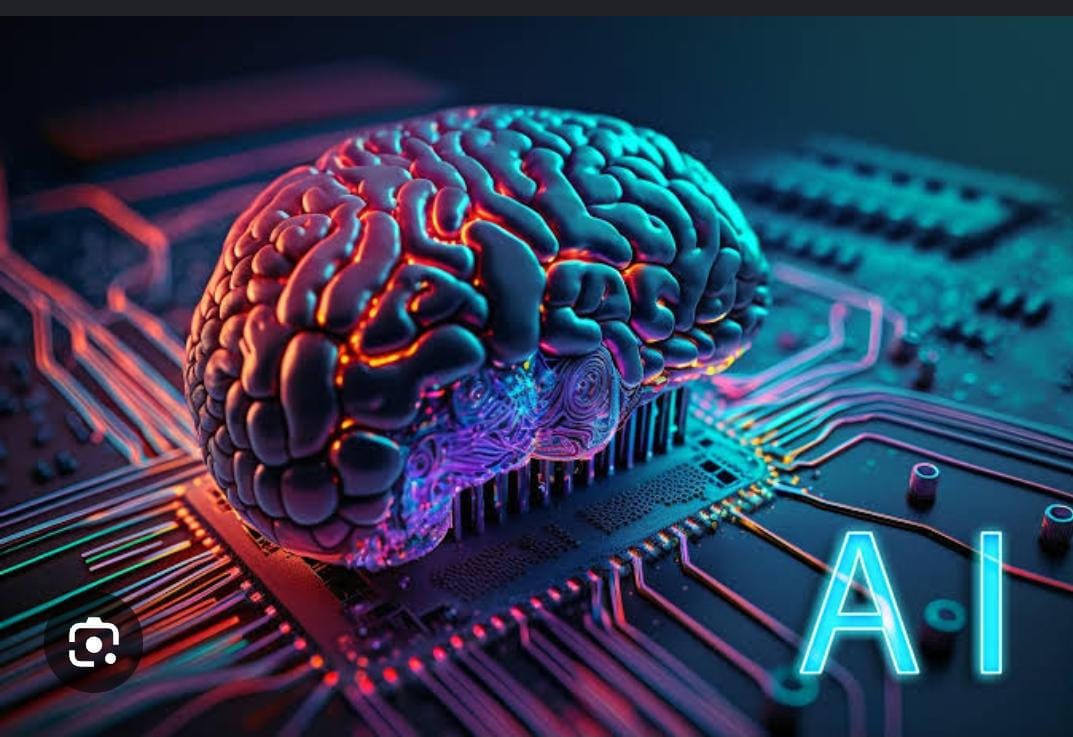Introduction
Artificial Intelligence (AI) is no longer a futuristic concept confined to science fiction. Today, it is an integral part of our daily lives, powering everything from smartphone assistants like Siri and Google Assistant to advanced systems driving autonomous vehicles and diagnosing diseases. At its core, AI refers to the simulation of human intelligence in machines that are capable of learning, reasoning, problem-solving, and decision-making
what is Artificial Intelligence?
Artificial Intelligence (AI), ability of machines or computer systems to perform tasks that typically require human intelligence. When computers are capable to perform human actions—such as learning, problem-solving, decision-making, or recognizing patterns—we describe this as AI, which is intelligence confirmed by an artificial system rather than a human being.An AI system can perform tasks intelligently without explicitly human guidance. These systems are capable of thinking, demonstrating intelligence, and translating that thought into action. A great example is a self-driving car, which must make decisions about speed, lane changes, and navigation in a manner similar to how a human would. It assesses its environment and acts accordingly, handling complex tasks autonomously.
How Does AI Work?
AI systems rely on a combination of technologies and methods:
-
Machine Learning (ML): Algorithms that allow systems to learn from data and improve without explicit programming.
-
Neural Networks: Computational models inspired by the human brain that process data in layers to recognize complex patterns.
-
Natural Language Processing (NLP): Enables machines to understand and respond to human language, powering chatbots, translators, and virtual assistants.
-
Computer Vision: AI systems that can “see” by analyzing and interpreting visual information such as images or videos.
-
Robotics: AI-driven machines capable of performing physical tasks with intelligence and adaptability.
Together, these technologies create AI systems that can analyze information, make decisions, and act autonomously.

Types of Artificial Intelligence
AI is broadly classified into three categories based on its capability:
-
Narrow AI (Weak AI): AI designed for a specific task, such as recommendation systems on Netflix or voice assistants. This is the most common type of AI today.
-
General AI (Strong AI): A theoretical form of AI that could perform any intellectual task that a human can do. This remains an aspiration for researchers.
-
Superintelligent AI: A future vision where AI surpasses human intelligence across all fields. While still speculative, it raises debates about ethics and control.
Applications of AI
Artificial Intelligence is revolutionizing multiple industries. Some key applications include:
-
Healthcare: AI algorithms detect diseases, predict patient outcomes, and assist in robotic surgeries.
-
Finance: Fraud detection, algorithmic trading, and personalized financial advice.
-
Education: Personalized learning platforms and automated grading systems.
-
Transportation: Self-driving cars, smart traffic management, and predictive maintenance in aviation.
-
Retail & E-commerce: Personalized product recommendations, chatbots, and inventory optimization.
-
Entertainment: Streaming platforms use AI to suggest movies and music based on user behavior.
-
Agriculture: AI-driven drones and sensors monitor crop health and optimize yields.
Benefits of Artificial Intelligence
-
Efficiency and Productivity: AI automates repetitive tasks, saving time and reducing human errors.
-
24/7 Availability: Unlike humans, AI systems can work continuously without fatigue.
-
Data-Driven Decisions: AI analyzes massive datasets quickly, providing insights that drive better decisions.
-
Enhanced User Experience: From personalized recommendations to smart assistants, AI improves convenience.
-
Innovation: AI enables breakthroughs in fields like medicine, climate science, and space exploration.
Challenges of Artificial Intelligence
Despite its potential, AI faces several challenges:
-
Job Displacement: Automation may replace certain human jobs, raising concerns about unemployment.
-
Bias in Algorithms: AI systems trained on biased data may produce unfair or discriminatory outcomes.
-
Data Privacy: Collecting and analyzing personal data raises questions about security and consent.
-
High Costs: Developing advanced AI requires significant resources, both financial and computational.
-
Ethical Concerns: From autonomous weapons to surveillance, AI raises debates about its responsible use.
Future of Artificial Intelligence
The future of AI looks both promising and challenging. Advances in deep learning, quantum computing, and edge AI are expected to make systems faster, smarter, and more accessible. Governments and organizations worldwide are investing in AI research to harness its potential in areas like healthcare, climate change, space exploration, and smart cities.
However, the future also depends on how society addresses ethical and regulatory challenges. Ensuring responsible AI — systems that are fair, transparent, and accountable — will be critical.
Conclusion
Artificial Intelligence is the driving force of the digital age, transforming industries and reshaping our daily lives. While it offers incredible benefits in terms of efficiency, productivity, and innovation, it also poses challenges that cannot be ignored. By striking the right balance between progress and responsibility, AI can truly become a tool that empowers humanity.
Check out more Blogs – Click here
Visit LinkedIn page – Click Here
